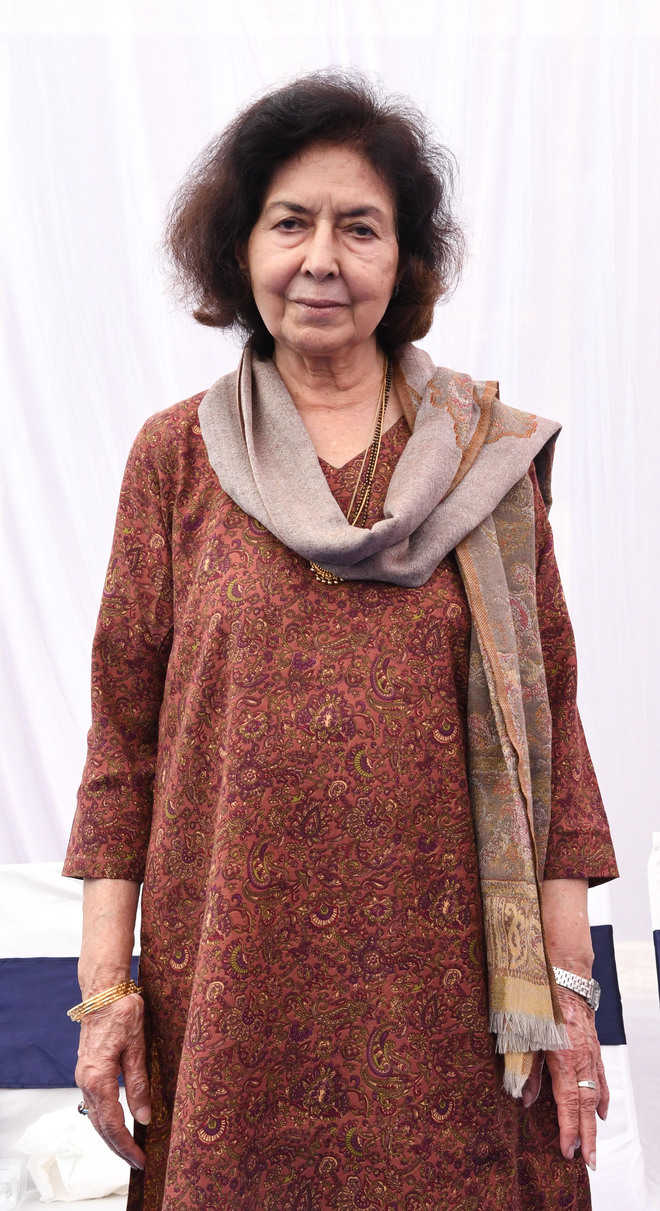
The word has it: Nayantara Sahgal
Manpriya Singh
Has the language Hindi been reduced to merely a language of advertising? Does great poetry come out of cultural unrest and hopeful perspectives? What is the way forward from the current political situation, unfortunately defined by religious fundamentalism? Day 2 of the ongoing Chandigarh Literature Festival carried forward the criticism and celebration of books amidst select audience and in a low key manner.
I speak when I need to: Nayantara Sahgal
In Chandigarh, in context of her chilling and satirical commentary on current times, When the Moon Shines By Day, author Nayantara Sahgal’s secular stance and political ideologies are well-known in the literary world.
At 90, one of the renowned English writers in India should rather be answering queries on what keeps her so energetic and inspired. “I have a clear conscious and believe when I say that I speak only when I need to.” Iyenger yoga, which she has been practising since most of her adult life and simple food fill in the rest of the blanks. “But I am not a vegetarian and I drink, rest I have simple food,” she laughs off moving onto questions on what plagues the current India and her book that deals with, “the unmaking of modern India.”
There is no denying the fact that how dangerous Hindutva is and can further be. “I am a Hindu and I say this, how dangerous it can and it is definitely a distortion of our religion.” Be it the Sahitya Akademi award she returned two years ago in the wake of the murder of rationalist MM Kalburgi or her protest against the current crimes and uncaught murderers, she has and continues to provoke the literary intellectuals of the country.
Of language Hindi, poetry and modern India
Author Manglesh Dabral’s session was marked by what plagues the language Hindi, starting from the English words that have crept into the language. “It has been reduced to merely a language of daily conversation and advertisings and that is enough. Hindi is no more a language of editorials, opinions and debates,” rues the author and poet Manglesh Dabral, in conversation in context of his session Naye Yug Main Shatru. Moreover, “We aren’t borrowing words from Urdu or Sanskrit or other Indian languages and most people have stopped reading Hindi literature.”
Finding the lost link
It started with a few vintage articles that tumbled out of her grandmother’s Godrej almirah. Little did author Nidhi Dugar know that she would be chronicling India’s dying professions in her book The Lost Generation—Chronicling India’s Dying Professions. Be it the wooden boat makers of Bengal or the Rudaalis from Rajasthan, her quest for India that is now extinct or endangered took her places. “It took me three to four years of research to come up with the book and I speak about as many as 11 professions.”
As much as a lesson in ancient India, it was a lesson in the impact of current society and modernization,” adds the author who has written the book in narrative journalism format.
“I had a tough time hunting certain tribes down, for instance the rudaalis in Rajasthan because of the state in which they live.”
Let’s talk about art & diversity
Filling in the rest of the blanks on the penultimate day and bringing in diversity in literature were the books Jasoda by author Kiran Nagarkar and Mohanaswamy, English translation from Kannada, originally written by author Vasudhendra. Slightly autobiographical and coming out of the closet stories of homosexual love, urbanization and current society. And Contemporary Art of North India, a collaborative literary endeavour by three authors, Guneeta Chadha, Nonika Singh and Rajesh Chadha. In conversation with moderator Rajneesh Wattas, the authors talk about how the book has been one of a kind attempt at chronicling the art works of North India’s artists. “It is about the works, the influences and the evolution in the art works of as many 40 artists,” shares Guneeta Chadha of the book that took almost 3-and-a-half years in the making. “There are 336 illustrations in total and the book is not just for niche audience, in fact, it is for everyone who is interested in art and artworks by artists from this region,” chip in the co-authors Nonika Singh and Rajesh Chadha.



























